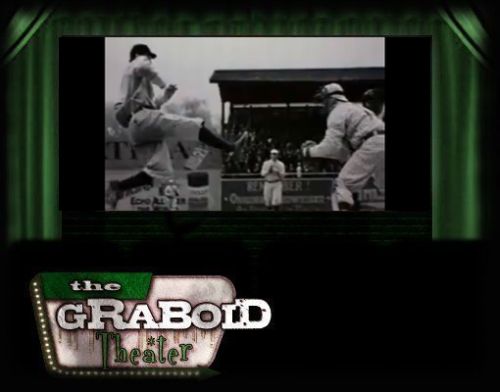Superman #1 (DC, $2.99)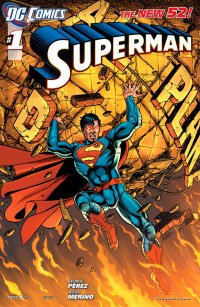
By Jeb D.
For years, the joke has been that the way to revitalize the comics market would be to release nothing but #1 issues, and I have been getting a kick out of seeing DC do pretty much exactly that. Whether it’s resulting in new readers or a new round of speculation remains to be seen (there’s a shedload of these things up on ebay), but what has struck me most about the storytelling has been the… well, the familiarity of it. I certainly haven’t read all the books, but based on the ones I have seen, and what I’ve read from my Thor compatriots and elsewhere, there seems to be very little going on that would have felt out of place or anachronistic six months ago; far as I can see, for example, the denizens of Gotham are still being pestered by an army of Bat-individuals (along with a fistful of past and present Robins), and the character “reboot” of Barbara Gordon seems to acknowledge her post-Killing Joke career as Oracle, so I guess not that much really has changed. For the most part, what’s making the successful books is not the “relaunch” concept, but simply good creative teams telling good stories (fancy that).
The “variant,” if you will, is Grant Morrison’s version of Superman in Action Comics. Not that his new Billy Jack-style “ass-kicking bleeding-heart liberal” persona is a huge conceptual leap past Supes’ decision to become a “citizen of the world” a few months ago, but Morrison’s decision to write him as a cheerful Golden Age wiseacre in his salad days naturally leads us to wonder just what sort of Superman he’s going to grow up to be.
Providing at least one answer to the question is veteran comic artist George Perez… but in the role of writer; he evidently also provided rough breakdowns for artist Jesus Merino to pencil over. Like a lot of guys who are primarily artists, Perez has a tendency to over-compensate when he takes on the scripting chores: this comic features a Bendis-like cascade of word balloons, with no character missing an opportunity to offer commentary on what we’re already seeing, or to bury us in infodump. Which is something of a problem, as most of this issue falls into territory familiar enough that no one with even a passing knowledge of Superman actually needs all this exposition thrown at them, and even if the theory is that “this is someone’s first Superman comic,” you wouldn’t want that newbie to get the idea that Supes’ adventures are always this cluttered.
Time has passed since we saw Superman’s introduction in Action Comics #1. Superman has acquired a new costume that dispenses with Morrison and Morales’ pajama jeans and Doc Martens in favor of something resembling the classic look, but with enough tweaks to hopefully stave off the Siegel family’s lawyers. He’s also got armor. I think. At least, he’s drawn that way, though I suppose this could be some kind of miscommunication between Perez and Merino. And in the time that’s passed, Clark Kent has morphed into… well, sort of back into a Silver Age Superman. He puts out a fire with his super-breath, while quipping “time you got snuffed”. He tosses a monstrous foe into space like a baseball, with the snappy “You’ve been doing all the pitching… now let’s see if you can catch!” At one point, Lois Lane spots him flying and calls out “Look! Up in the sky!” We move forward a bit to Byrne’s Man of Steel, as the Daily Planet is yet again undergoing transformation in the name of “New Journalism.” There’s a touch of 90’s angst, too: not just in the look of Merino’s finished art, but with vintage dialog (responding to Lois’ insistence that the changes at the Planet will only bring good, Clark anguishes “At what price, Lois? Our integrity? Our souls?“). And it would appear that Lois and Clark are once more two legs of a love triangle (though there are suggestions that it might morph into a weird sort of quadrilateral; readers may know that the real-life Perez is one of comicdom’s kinkier gents). While I certainly wouldn’t call this a better comic than Action #1—it’s over-written, and the art has all of Perez’ cramped stiffness with little of his redeeming musclularity or epic quality—in the end, it’s a pretty decent Superman comic, particularly given its evident desire to tell you everything you could possibly need to know about the new status quo in 20 pages. As I say, good comics come from good creators telling good stories, not from corporate imperatives toward change, and in the end, Perez and Merino understand that, basically, old-school Superman was never broke and, commercial considerations aside, really didn’t need fixing.
Rating:





Out of a Possible 5 Stars
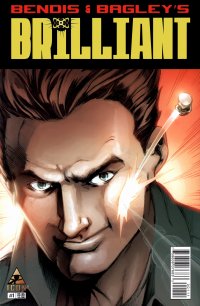 BRILLIANT #1 (Icon, $3.95)
BRILLIANT #1 (Icon, $3.95)
By Jeb D.
No one picks up a Brian Bendis comic—particularly one outside the work-for-hire environment–to see shit blow up. That’s not to say that it never happens, but if you read Bendis at all, you read him for his ability to sketch character through telling dialog exchanges, and his Stan Lee-like curiosity about just what it would look like if the world outside his window were skewed ever so slightly into a series of comic panels.
Thus, Bendis’ latest creator-owned project, done in conjunction with his longtime Ultimate Spider-Man partner Mark Bagley, making his debut in the creator-owned arena. It’s the story of a group of tech-savvy science nerd college buddies who do what college kids do in dorm rooms these days: drink a lot and invent stuff to change the world. Bendis has described the book as being as if the cast of The Social Network invented superpowers instead of Facebook. He kicks off this issue with a demonstration that they’re clearly on to something; it’s fairly startling in a real-life environment, but would be a kind of ho-hum start to a conventional superhero book. The fact that it edges closer to startling than to ho-hum is due in large part to Bagley, who’s roughened his style a bit here, giving his usually heroic figures a more down-to-earth look. By now he’s expert at capturing the Bendis rhythm, and he takes us smoothly through the casual conversations that shade from the mundane to the scientifically miraculous. I also like the character design: these guys don’t wear big geek glasses or pull their pants up to their waists (or cringe in fear at the sight of a female); they’re ordinary looking kids, about to try something extraordinary.
And that’s pretty much your first issue: you’ll meet the main characters, discover their well-drawn backgrounds and relationships, reflect on their inspiration (a brief window in the 20th century when writers of science, and of science fiction, had more in common than they had separating them), and get a tease of where they’re going to take it. For those who enjoy following a story as it unfolds, it’s a fine first chapter. For those who feel as though more ought to happen when they crack open the book, or want more bang for their buck, my guess is that the eventual trade collection will be well worth your time and money.
Rating:





Out of a Possible 5 Stars
Bonnie Lass #1 (Red 5, $2.99)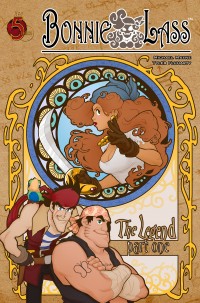
By Jeb D.
The genre mashup is always a tricky proposition: art flourishes best when it’s banging against its limitations, kicking against the pricks, forcing itself to work within boundaries, which means that if you take too much leeway one side or the other, it’s awfully easy for the reader to go from “Wow— I did not see that coming!” to “Aw, jeez, what next?” Bonnie Lass, which began its existence as a web comic and is moving to print as a 4-issue miniseries, attempts to walk that particular tightrope with mixed results.
The titular (so to speak) heroine is a pirate’s daughter with lush figure, luxuriant hair, and daddy issues, who has become a formidable, wanted pirate herself. She’s also dressed in a tank top with sports bra peeking out, cutoff Daisy Dukes, and wearing a necklace from the clearance rack at Claire’s. And speaking of racks… we also get Bonnie’s sitcom quandary about her breasts: you’ll annoy her if you ogle them, and piss her off if you don’t.
You may see where we’re going with this: the pirate structure in place tells the conventional story of Bonnie and her crew and their quest for “The Eye of the Leviathan,” with fights and flights and properly sinister bad guys from a bygone age of adventure; much of the design and other trappings fit that bill. But most of the actual jokes come from tossing a kitchen sink’s worth of modern attitudes and paraphernalia into the mix: computers, robots, shotguns, GPS, and 21st century wisecracks (“grew a pair, did you?”). The humor and absurdity is all well and good, but it tends to diminish the “real” adventure, to which the book devotes a lot of time: there’s an extensive, frenetic sequence of Bonnie and crew desperately piloting their ship in a race through treacherous waters, but in this story, enough absurd and off-the-wall stuff happens that you half expect the ship to sprout wings or windsurf its way out of trouble, and you’re certainly nowhere close to the edge of your seat. In a world that appears to have no consistent rules of time or space, there’s not much challenge in defying them.
Bonnie Lass gets over on the basis of its art. Michael Mayne, who draws the book, and co-writes it with Tyler Fluharty, has an eye-popping cartoonish style that is charming, kinetic, and colorful, and he knows how to exaggerate for effect; I wouldn’t turn to him for subtlety, but so far that’s not a problem. The aforementioned ship chase gains what excitement it manages from the headlong rush of his paneling; there’s also a wonderfully entertaining saloon brawl, and in issues to come, we get shipboard shootouts, bad guys with robotic bits, and sea monsters, among other entertainments. And this Looney Tunes approach is great for the knockabout fun; it’s less effective when Bonnie has to brood on matters of life and death or lineage, and while she’s certainly no damsel in distress, there’s often a disconnect between the characters’ loose-limbed physicality and the sometimes painful sequences of Bonnie getting smacked around in a fight. But on balance, over the four issues I’ve read, there’s enough knockabout fun and craziness to compensate for the overall story not being all that involving.
Bonnie Lass is a sprightly lark of a book, that only occasionally takes itself more seriously than it needs to. Highly recommended to lovers of wacky, cartoony art and endearingly dumb jokes.
Rating:





Out of a Possible 5 Stars
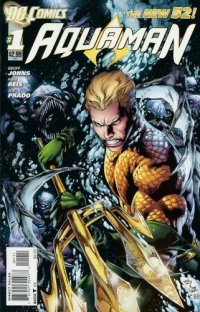 Aquaman #1 (DC Comics, $2.99)
Aquaman #1 (DC Comics, $2.99)
by Graig Kent
It’s true, on the surface, Aquaman is kind of silly. When you look at the character’s costume, his powers, his weakness and his pop-culture legacy, he truly is a bit of a goofball figure. Yet, the actual stories that have been told about him, the meat on his character’s bones, features some really interesting stuff. Interesting, yet not exceptionally popular. The fact that he’s been a punchline so often (the Mermaid Man parody in Spongebob Squarepants perhaps the latest and most prominent), and that so frequently the merchandising of the character has reflected that aspect of him (even in the current animated Brave and the Bold series, he’s the comic relief, more so than Plastic Man even!), well, it makes it hard for the general public to take him seriously.
The first issue of his new series seeks to address that perception of him head on, with all the subtlety of Gallagher smashing a watermelon. At every turn in this book someone is addressing Aquaman derisively, or back-handedly at the least. Were he not looking so stern and poker-faced, he’d be pulling on his proverbial tie saying “I get no respect”. So, checklist: “Does he need water every 60 minutes?” Nope. “Is he ashamed of his vibrant costume?” Nope. “Does he talk to fishies?” Fishies aren’t capable of complex thought, so not exactly. “Is he strong and tough on land because he’s able to survive the pressures of the deep?” You bet. “Does he not put up with anyone’s shit?” Not for long. “Is he still king of the seven seas?” Not if he can help it.
Johns’ script gets out all these points as well as delving into Aquaman’s backstory in an exceptionally ham-fisted way (he’s shanghaied by a blogger at a restaurant he’s visiting… mmm hmmm). While I guess in the end it is effective in getting it all out of the way it’s just not a very clever way to do it and not nearly as witty as it tries to be. But Johns does manage to set up a new aquatic threat to the mainland (perfect for an aquatic-based hero who just decided to relocate to the surface world) and establishes the Arthur/Mera relationship in a suitably romantic way.
But if anything works in Johns’ script, it’s in large part to Ivan Reis, who has transformed into one of the premiere artists in the industry over the past few years. Teamed with Joe Prado on inks, his lines are feathery, his shadows are soft, but they combine to make some beautiful imagery. Reis knows how to craft a powerful splash page, but he crafts talking heads with as equal interest and care, and the dexterity in his facial expressions have reached new levels here as Aquaman reacts with many different levels of frustration throughout. As with Green Lantern #1 and Doug Mahnke, here Johns is teamed with an artist who is able to overcome a middling script and make a book that’s worth coming back to.
Rating:





Out of a Possible 5 Stars
Blackhawks #1 (DC Comics, $2.99)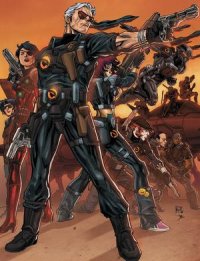
by Graig Kent
I come to Blackhawks not as any fan of the original team, but as a fan of writer Mike Costa’s G.I.Joe/Cobra series at IDW. It has been one of my favorite books on the stands since its inception (where Costa was partnered with Christos Gage initially and now runs with it solo), an expertly executed look into the inner working of a multinational terrorist organization and their deadly game of espionage with the “good guys”. I was excited to see what he would do with access to the DC Universe where he’s been given the opportunity to revamp an elite WWII flying squadron of international pilots as a modern-day elite fighting squadron for the United Nations. The results haven’t exactly lived up to my expectations.
Not to “typecast” Costa, but I was expecting a G.I. Joe-in-the-DCU flavour, and while he provides a taste of that, what is unfortunately missing is the familiarity to draw the reader in. This is a brand new cast of characters, a brand new operation, and while Costa provides a bit of a tour of the Blackhawk’s impressive set-up, and puts some faces to names, he doesn’t provide much in the way of character, likely limited by its top-loaded 8-page action sequence. That action sequence is muddy, and light on details, so understanding who’s in play, and the purpose of the fight is about as clear as the progression of the sequence itself.
The art by Graham Nolan and Ken Lashley isn’t bad, it’s just not very effective at drawing the reader in or giving them much in the way of “wow” factor. The character, costume, vehicle and set designs are all generally uninspiring when that, like G.I. Joe, is what should be focused upon to sell the book. The characters don’t need elaborate superhero costumes, but they do need something more defining, and certainly shouldn’t have such an extreme 90’s aesthetic to them. The coloring is a rare miscalculation from the usually exceptional Guy Major. The illustrations are filled in with muted browns, grays and greens, with no real flair or flourishes to catch the eye. The characters seem to blend into their vehicles just as the buildings seem to blend into the ground and sky. It’s just a dull looking book. I hear that the art team will be changed up over the next couple of issues, which hopefully improves things on that front, but the question will be is it enough to put some color into what is otherwise a rather pale read?
Rating:





Out of a Possible 5 Stars
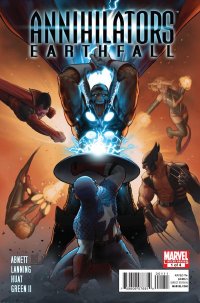 Annihilators: Earthfall #1 (of 4)(Marvel, $3.99)
Annihilators: Earthfall #1 (of 4)(Marvel, $3.99)
by Graig Kent
The previous Annihilators mini-series failed to engage me to such a degree that it took me about 3 months to get around to reading the final issue. Despite being written by the same writing team that guided the Marvel cosmic through nearly 5 years of incredible storytelling, and despite re-introducing the Spaceknights, thus plucking the old ROM nostalgia strings, something just didn’t click. Part of it felt like Dan Abnett and Andy Lanning had perhaps passed their “best before” date on the cosmic orchestration, and part of it was just my general apathy for the team assembled. Ronan, Gladiator, Beta Ray Bill, SIlver Surfer and Quasar? Yes, that’s a lot of muscle/firepower, and putting them on a team together may seem like an inspired idea, but in execution it didn’t quite work out that way, primarily because they’re all virtually the same type of character, which is kind of dull from a team dynamic standpoint.
This time around, the Silver Surfer is gone, replaced by Ikon the Spaceknight and Cosmo the telekinetic Russian canine cosmonaut, both at least providing a bit of flavour to the team, yet still looking odd, like a group that just doesn’t belong together. The story here is, ultimately, inconsequential, as it’s essentially just an excuse to get the Annihilators to Earth and square them off against the Avengers for an issue or two. Unlike the grander scale cosmic storytelling Abnett and Lanning concocted previously, both these 4-issue Annihilators series don’t feel comparably large enough or epic enough to justify the casting.
While I actually do quite enjoy returning artist Tan Ang Huat’s style, I don’t think he’s necessarily the right fit for the story. He draws excellent spaceships and starscapes and cuts powerful figure poses on a frequent basis, but he also has a playful sense of perspective which undermines the story which shouldn’t otherwise read as “playful”.
As with the last mini-series, “Earthfall” also features a Rocket Raccoon back-up feature, though now reduced to 5 pages of tightly told frivolity. Unlike the main feature, Abnett and Lanning capture the perfect tone for the characters, and are backed up by the appropriate artist in Timothy Green II, whose expressive illustrations have a cartoonish nature without being too cartoony about it.
Rating:





Out of a Possible 5 Stars
Justice League Dark #1 (DC, $2.99)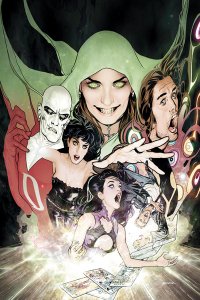
By Adam Prosser
I’ve never quite understood the fascination with separating out the “magical” side of the DCU from everything else. I suppose there’s a certain logic to it, in that the main DC heroes—particularly Superman—tend to personify the classic American fascination with science and technology, and if you’re looking for ways to get around these character’s awesome power levels, magic seems like a convenient plot device to do so. And it’s not too hard to make the leap to “Well, the Justice League could pretty much take on an alien invasion by themselves, but against a magical foe they could be powerless! Therefore, we need another team of heroes to solve these problems! One that sounds like a brand of chocolate!”
But to me, comic book universes are pretty much unified by their weirdness. Sure, you can slap an arbitrary “magic” or “super-science” label on something, but you’re your definition of “science” includes a dude who gets the ability to fly and throw planets around from yellow sunlight, or a super-speedster who got his powers from being struck by lightning while doused in chemicals, or a guy with an alien ring that can make things out of the colour green, well, I’m not sure “arbitrary” is a strong enough word. Superhero comics take place in a gleefully surreal idea-space where anything can happen, and while nominal definitions take on a certain importance in such a bizarre genre, trying to identify a superhero’s “turf” seems kind of limiting. Nevertheless, I do understand the story motive.
Of course, as he was with so much else, Alan Moore was one of the first to rally the mystic heroes of the DCU, with the climax of his seminal “American Gothic” storyline in Swamp Thing. That story also overlapped “Crisis on Infinite Earths” but then took several of the magical characters to another plane of reality to combat nameless evil. It’s from this storyline that writer Peter Milligan seems to be drawing inspiration for rich, creamy <b>Justice League Dark</b>, bringing a bunch of magically-powered characters (many of which have been kept separate at Vertigo for years) to deal with the menace of an apparently insane Enchantress. Her wild spells drive back the Justice League (oddly, we’ve now seen more of the JLA in action in “dark fantasy” books like this and Swamp Thing than we have in the actual Justice League book) and seem to necessitate the involvement of junior member Zatanna, who decides this is her wheelhouse. The rest of the book is a whirlwind introduction to Madame Xanadu, Shade the Changing Man, John Constantine, and Deadman, destined to come together to stop some catastrophically generic future event. (Sorry, but at this point, the future vision of a pile of bodies elicits a bit of a shrug from me. That could be anything! It could be a train wreck! It could be food poisoning at an outdoor rock concert!) More intriguing is the mystery of a strange woman named June Moone, wandering the city, delusional and amnesiac…and shadowed by an array of clones.
I’m not hugely familiar with Peter Milligan. I know he seems to be considered a B-Lister to the giants of the original British Invasion (Moore, Grant Morrison, Warren Ellis, and the like) and I’ve heard good things about a lot of his books, but based on the evidence here I’m waiting to be impressed. Don’t get me wrong, this book does a much better job of introducing the characters and the conflict than many of the other New 52 books, and it’s got a fairly lively pace, a few nice bits of writing (I especially like the first few captions) and the potential to be a lot of fun. But I’m not really clear on what this book wants to be—is it another DCU book, but with Vertigo characters? A Vertigo book set in the DCU? Horror? Fantasy? Something else?
I may be nitpicking a bit; in most respects, really, this is a strongly-executed comic book. I guess I just felt like I was getting hit with a whirlwind of plot threads that were barely introduced, just as Superman and Wonder Woman are hit with a whirlwind of teeth (?) while trying to reach the source of some magic run amok. And the mere fact that the Justice League sequence felt more integral to the story than anything that the supposed main characters do may be at the heart of my issues here. Once again, the concept of the New 52—and the apparent need to reintegrate the Vertigo characters into the DCU—is getting in the way. Once we can dispense with that business, Justice League Dark (with huge hunks of caramel and nougat) might become something special.
Rating:





Out of a Possible 5 Stars

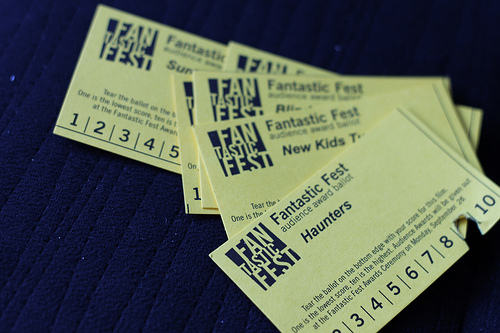




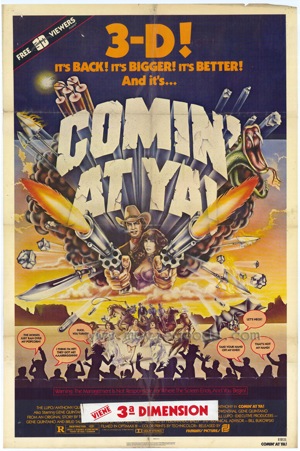 Comin’ At Ya! 3D
Comin’ At Ya! 3D

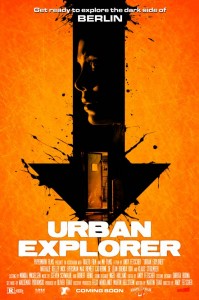 Urban Exlporer
Urban Exlporer
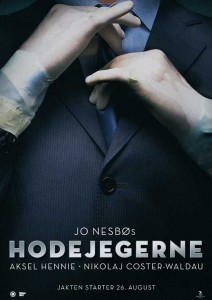 Headhunters
Headhunters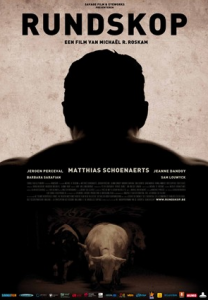 Bullhead
Bullhead You’re Next
You’re Next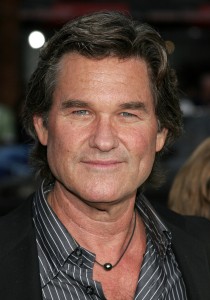 There were a lot soft kicks in the dirt and cries of “bummer!” in the air
There were a lot soft kicks in the dirt and cries of “bummer!” in the air 







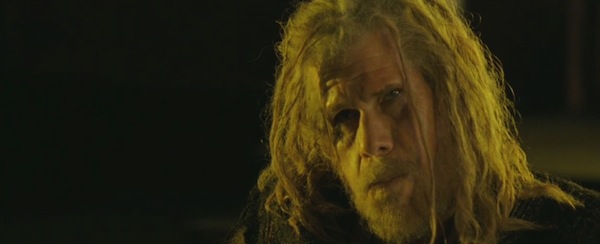
 Renn: Speaking to that, when At The Mountains of Madness collapsed, being both a friend of Guillermo’s and someone in the industry, how did that make you feel?
Renn: Speaking to that, when At The Mountains of Madness collapsed, being both a friend of Guillermo’s and someone in the industry, how did that make you feel?







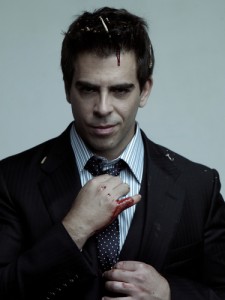 We’ve already alerted you to one cool event happening in LA in conjunction with Singafest, and now there’s another that should be on your radar. This festival is being co-sponsored by Bigfoot, the company that keeps this site afloat, so naturally we want to help however we can and we think you’ll be interested…
We’ve already alerted you to one cool event happening in LA in conjunction with Singafest, and now there’s another that should be on your radar. This festival is being co-sponsored by Bigfoot, the company that keeps this site afloat, so naturally we want to help however we can and we think you’ll be interested…
